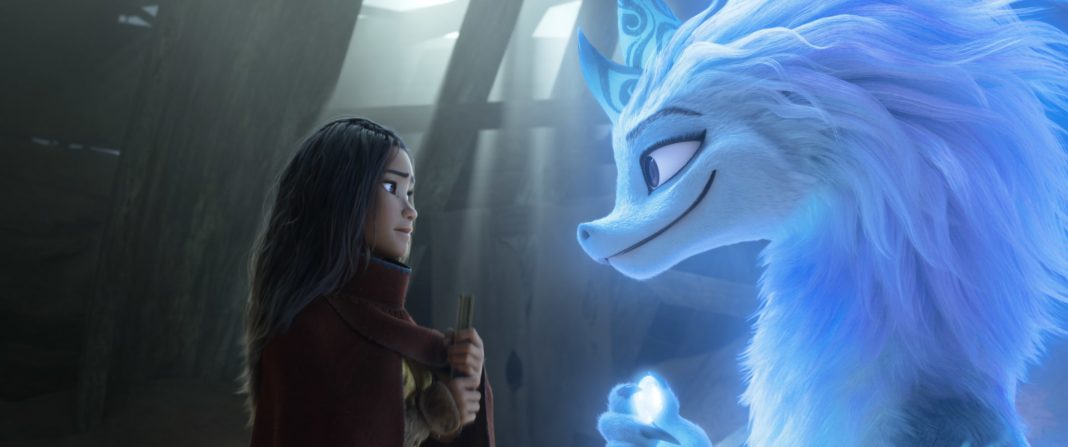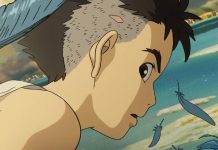As the newest release from Walt Disney Animations Studios, Raya and the Last Dragon doesn’t lack when it comes to heart, magic, and humor. Directed by Don Hall and Carlos López Estrada with writing credits going to Qui Nguyen and Adele Lim, Raya tells the story of a brave and fierce warrior princess named Raya (Kelly Marie Tran) who is on a mission to find the last dragon in order to world back to life after it is attacked by a sinister plague called the Druun. Although there are undoubtedly some flaws when it comes to the production side of Raya, the actual story and message delivered by the film is pure Disney bliss.
500 years prior to the events of the film, dragons and humans lived in harmony in the country of Kumandra. Then came the Druun, a plague born of human discord that turned living beings into stone. It took the dragon Sisu (Awkwafina) using her magic to destroy Druun to stop the plague from destroying the world. As a result, people are saved, but Kumandra is broken into five kingdoms: Heart, Fang, Spine, Talon, and Tail. However, after centuries of comparative peace (with dragons only as a myth), a tragic event re-releases the Druun, forcing the young princess Raya on her path.
Determined to set the world right and bring her father, Chief Benja (Daniel Dae Kim) back, Raya spends the next six years exploring the land with her giant armadillo pill bug Tuk Tuk (Alan Tudyk??, though he can’t have had more than 5 minutes of actual voice screen time) searching for Sisu, the last dragon. Sisu is an innocent, goofy, open-minded young dragon. Awkwafina definitely leans on her comedy and the result is pure whimsy. Paired with the serious and straight-laced Raya, the two embark on their mission. But princess Namaari (Gemma Chan) from the Fang is hot on their tails.
While Namaari and her mother Chief Virana (Sandra Oh) are technically the “villains” of the film, their villainy is more a byproduct of the real villain than anything else. Druun, the amorphous purplish-black mist that ravages the land, is the true villain. It doesn’t distinguish what land you’re from or who you are, it devours life all the same. In many ways, Namaari and Raya could easily have traded places in the story. They’re untrusting, cautious, jaded; they were forced to grow up too quickly and burdened by the prejudices of generations.
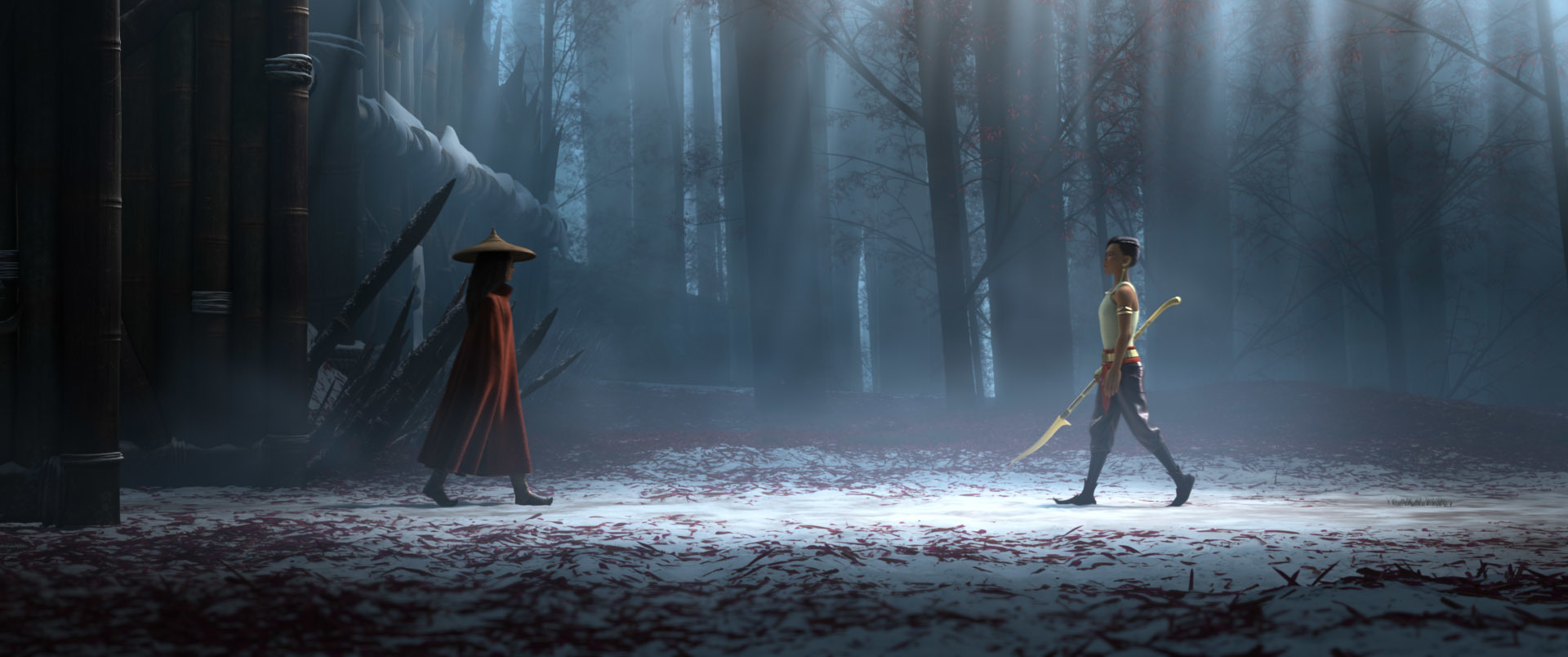
On the flip side is Sisu, generous and open-hearted, ready to approach any stranger with a gift and a smile. Sisu’s trusting nature might initially come off as naive, but we know that she is coming from a better place than the two princesses. Instead of holding onto grudges or judgment, Sisu’s willingness to trust and open up her heart teach everyone in the film a lesson about harmony and rekindles hope.
This is obviously the main message of Raya and although few Disney films are subtle about their lessons, Raya does it artfully. Throughout Sisu and Raya’s journey, they meet people from each part of the country: Boun (Izaac Wang) from Tail, Noi (Thalia Tran) and her three Ongi from Talon, and Tong (Benedict Wong) from Spine. Early on in the film, Chief Benja chides Raya for her regionalism, telling her, “If we don’t stop and learn to trust one another again, it’s only a matter of time before we tear each other apart.” Meeting a member of each of the other four lands of Kumandra teaches her that there is more unifying people than drawing them apart.
Sisu teaches Raya how to develop hope for humanity, without hostility or prejudice. As Sisu suggests to Raya, “Maybe the world’s broken because you don’t trust anyone.” Traveling with Boun, Noi, and Tong, the group becomes a found family. Each having lost their own families, they bond with one another while drifting on Boun’s “Shrimporium” boat restaurant shedding the borders that separated them. In the end, it is trust and faith in one another that saves the world. Selfishness and isolation serve no one in this world and will only take you toward a speedier demise.
Humor and heart go hand in hand in Raya and Awkwafina deserves extra praise for her cheery and lively Sisu, but also Izaac Wang’s Boun is a hilarious 10-year-old entrepreneur restaurant owner, whose character introduction is charismatically amusing. The animation is also spectacular, with extra cute points going to the Tuk Tuk and Ongi designs. From underwater shots to beautiful rain scenes, the water and magic animation is absolutely spellbinding and made me wish that I could have witnessed it in the theater rather than in my own home. On top of all of that, the score from James Newton Howard is fantastic. From the drum beats to the vocals to the rising crescendos, the score feels instantly iconic.
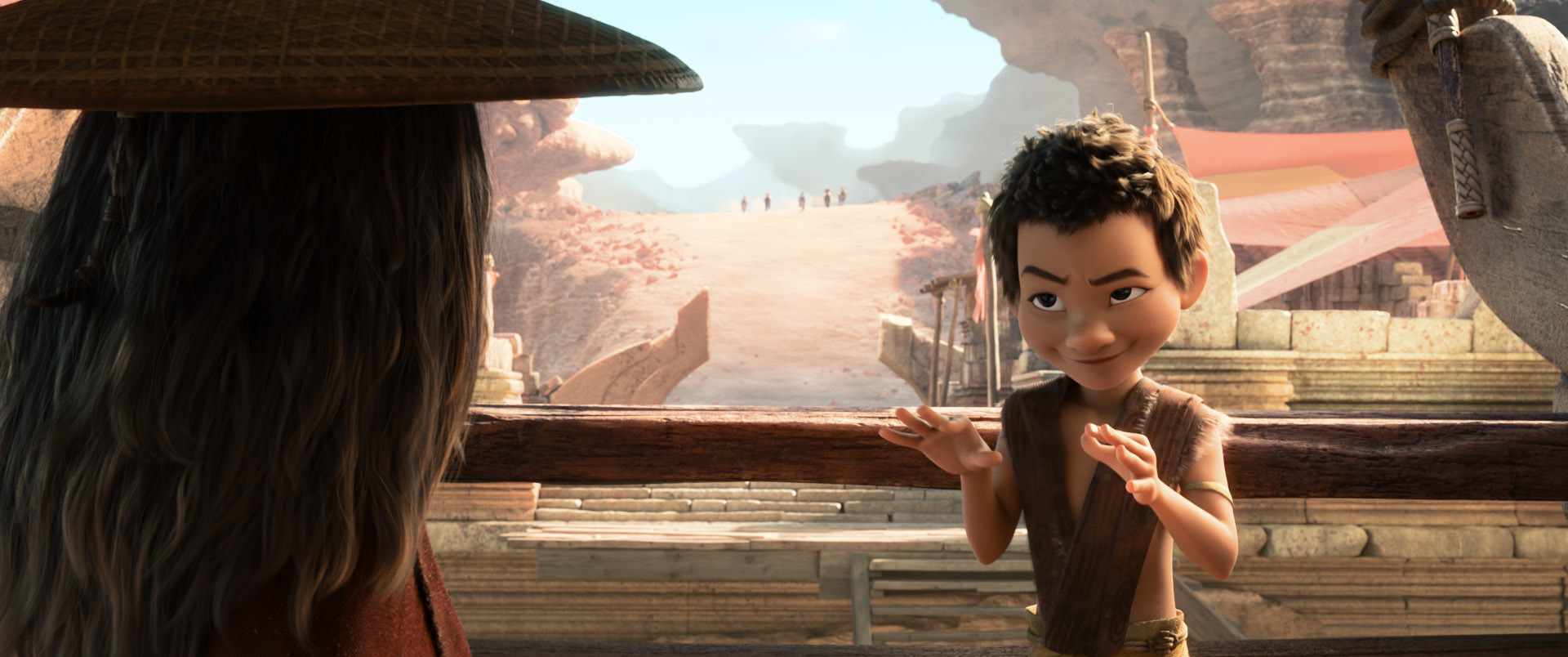
Of course, I can’t talk about the good without talking about the bad and there is a big problem with Raya, and that is with its casting. While the leading cast all did a fantastic job, it’s hard not to look at the cast list and recognize that only three of the eight main cast are Southeast Asian actors: Kelly Marie Tran, Izaac Wang, and Thalia Tran. While I am happy to see Asian actors voicing these characters, it feels wrong to hire so many East Asian actors to voice characters that exist in a world based on Southeast Asian culture.
Yes, the directors and writers have said that this is a fictional world, but it’s a fictional world that is clearly inspired by an amalgamation of Southeast Asian cultures. From the food to the costuming to the character design, the influence is undeniable. Forming a “Southeast Asia Story Trust,” Kumandra was based on the cultures of Laos, Thailand, Cambodia, Vietnam, Myanmar, Malaysia, Indonesia, and the Phillippines, with expert consultants serving as advisors. Fawn Veerasunthorn also served as the Head of Story for the film.
When it comes to Asian representation in Hollywood on-screen, much of it comes from East Asian actors. This seemed to be the ideal opportunity to uplift Southeast Asian actors into leading roles. And it’s not like the film only has three, the supporting cast has more Southeast Asian representation than the main cast does. As happy as I am to watch a film about a Southeast Asian princess, the first from Disney, we can always do better. There is always room to improve and this should have been a change that was implemented.
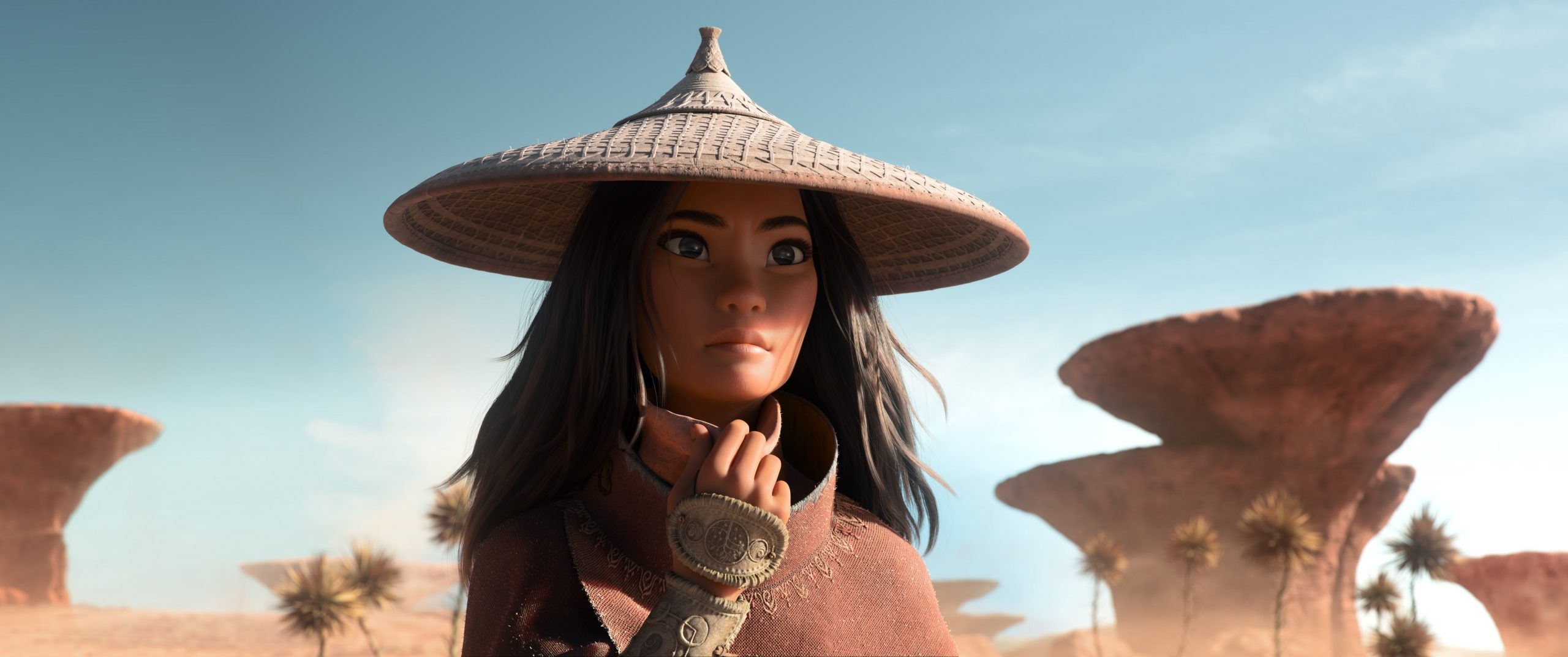
From the production side, the film was made during the COVID-19 pandemic, with the cast recording their parts at home and animators animating from home. In the end credits, the production team left a cute little note along with a list of babies born during the production:
“The making of this movie from over 400 individual homes was completely unprecedented and relied entirely on the talent, ingenuity, and dedication of everyone at Walt Disney Animation Studios. The filmmakers would like to thank them for their tireless hard work, good humor, and most of all patience… with our inability to properly use the internet. (Dude, you’re still on mute.)”
Despite casting controversies, I still ended up enjoying Raya and the Last Dragon. I enjoyed seeing the representation of Asian mythology in the form of a water dragon. It was exciting to see a story with strong female leads that drive forward a message about trust, hope, and harmony. Honestly, if they had thrown in a ship with Namaari and Raya it would have been even better (a girl can dream). Funny and heart-warming, Raya and the Last Dragon is a must-see for the family and in times of distance and isolation, it might just inject a bit of magic back into life.
Raya and the Last Dragon will be available on Disney+ with Premier Access and in select theaters on March 5, 2021.


